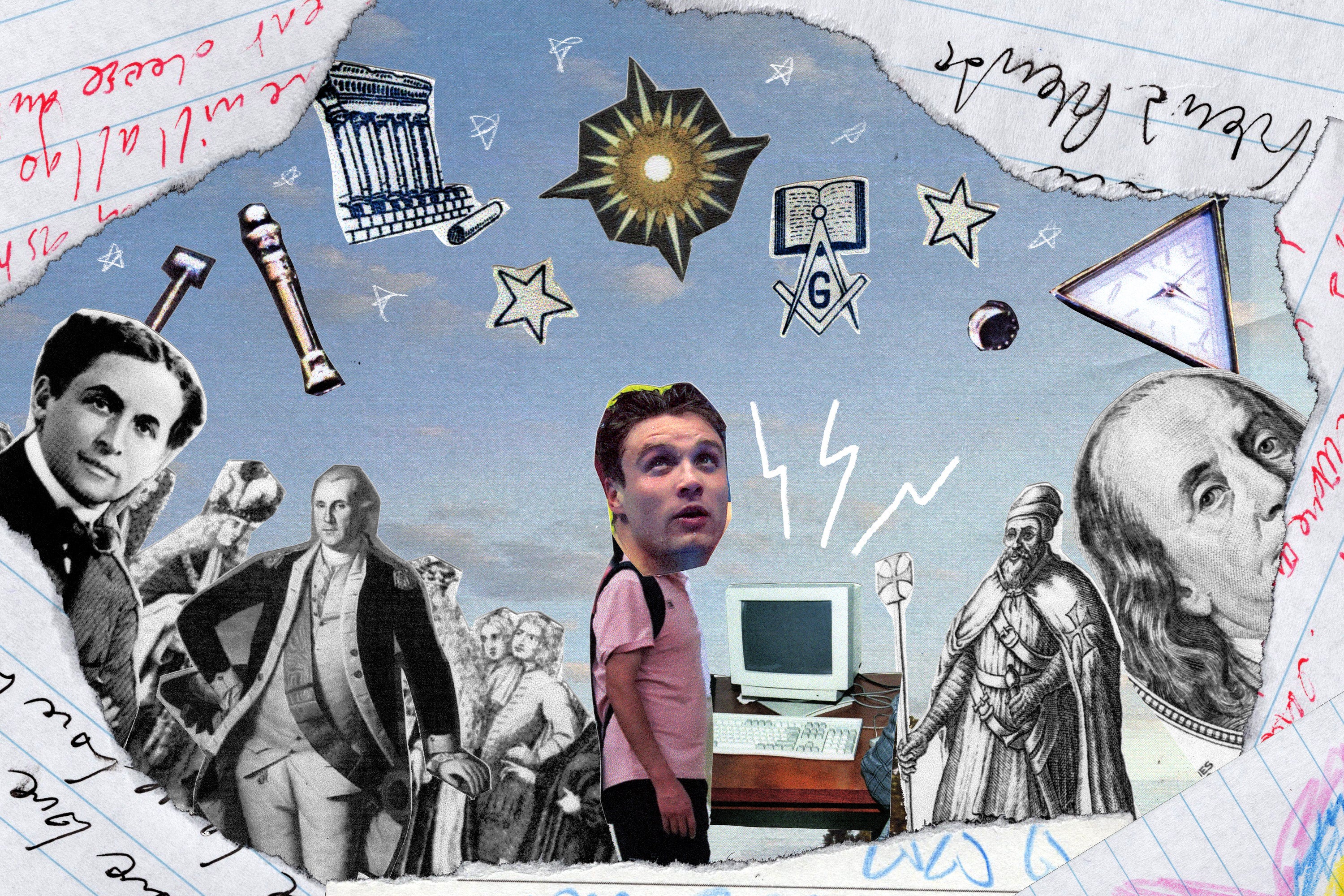The Best Guide to Understanding How to Become a Freemason Easily
The Best Guide to Understanding How to Become a Freemason Easily
Blog Article
Checking Out the Mysteries of the Freemason: What You Required to Know
The Freemason, a term commonly shrouded in intrigue and dispute, stands for an intricate tapestry of historic fact and contemporary myth. Developed in the late 18th century, this secret culture was originally rooted in the Knowledge's perfects yet has because ended up being associated with conspiracy theories about elite control. As we navigate the origins, key figures, and the stark comparison between misconception and reality, one have to think about just how these narratives influence contemporary understandings of power and privacy. What may be revealed with a more detailed assessment of these aspects can test long-held assumptions regarding the darkness that stick around in our culture.
Beginnings of the Freemason
The beginnings of the Freemason are soaked in a mix of historic intrigue and ideological fervor. Developed in 1776 in Ingolstadt, Bavaria, by Adam Weishaupt, the team was at first created as a secret society aimed at advertising Enlightenment ideals such as factor, secularism, and the separation of church and state. Weishaupt, a teacher of canon legislation, looked for to challenge the dominating authority of the church and state, which he deemed oppressive organizations stifling intellectual and individual liberty.
The Freemason sought to recruit prominent participants from numerous social markets, consisting of politics, academic community, and the arts, to promote a network dedicated to these Knowledge principles. The culture run under a veil of secrecy, employing coded language and routines to secure its participants from mistreatment, particularly provided the repressive climate of the time. The Freemason encountered considerable resistance from both governmental authorities and spiritual organizations, which watched the group as a danger to their power.
Key Figures and Members
That were the critical figures that shaped the Freemason's very early influence and direction? The Bavarian Freemason, established in 1776 by Adam Weishaupt, emerged as a reaction to the overbearing societal structures of the time.
An additional significant number was Johann Gottlieb Fichte, a noticeable theorist whose ideas on nationalism and education and learning resonated with the Freemason's goals. Fichte was not a formal participant, his philosophical bases affected the team's belief. In addition, figures like the writer and thinker Johann Wolfgang von Goethe were connected with the more comprehensive intellectual motions of the time, although their straight participation with the Freemason remains disputed.
These vital numbers contributed to the Freemason's early direction, pushing the borders of political and social idea, while their cumulative initiatives intended to challenge established norms and foster a climate of progressive modification in Europe.
Myths vs. Truth
Lots of misunderstandings surround the Freemason, usually blending reality with fiction in such a way that obscures its true nature. This secret society, originally established in 1776 in Bavaria, aimed to promote Enlightenment perfects and fight religious and political oppression. The concept that the Freemason remains to put in significant impact over world occasions is a misconception. While the team did exist, it was disbanded in the late 18th century and has not run as a natural entity ever since.
An additional prevalent myth is that the Freemason comprises a network of elite people controling worldwide affairs. Actually, numerous conspiracy theory concepts exaggerate the group's importance, attributing unfounded objectives to social patterns and events. This has actually caused an oversimplified view of complex problems.

Modern Interpretations
Contemporary analyses of the Freemason usually show more comprehensive societal anxieties and an attraction with secrecy and power. This modern lens regularly connects the Freemason with conspiracy theory theories that recommend a concealed elite orchestrates world events, adjusting governments and economic situations for their own gain. Such stories take advantage of an ingrained distrust of authority, especially in times of situation or social upheaval.

Furthermore, some modern analyses mount the Freemason as a metaphor for the intricacies of globalization and the interconnectedness of significant people and companies. This viewpoint urges an essential exam of exactly how power dynamics run in today's world, highlighting the balance between transparency and secrecy in governance and company techniques.
Social Influence and Tradition
Influenced by centuries of intrigue, the cultural influence and heritage of the Freemason extend much past its historical origins. This secret culture, developed in the late 18th century, has permeated numerous facets of preferred culture, from literature and movie to songs and art. The find this principle of the Freemason has progressed into an icon of conspiracy concepts, often representing a perceived surprise power adjusting international occasions.
In literature, authors like Dan Brown have woven the Freemason right into complex stories, exciting viewers with styles of secrecy and power. Films such as "National Treasure" and "The Da Vinci Code" better bolster the attraction of the society, blending truth with fiction to produce appealing stories.
The Freemason's impact additionally expands into music, with artists referencing the company to evoke themes of rebellion and social review. This portrayal has actually added to an attraction with the idea of private teams managing the levers of power, mirroring societal anxiousness regarding authority and transparency.
Ultimately, the Freemason's legacy is a complicated tapestry of myth and reality, forming perceptions of secrecy and control in modern discourse. Its long-lasting existence in culture highlights mankind's perennial pursuit for comprehending hidden facts.
Conclusion
The expedition of the Freemason discloses index a complicated interaction between historic realities and modern myth-making. Established in the Knowledge period, this society aimed to challenge overbearing frameworks, yet its legacy has actually been eclipsed by conspiracy theory theories that recommend elite adjustment. Comprehending the distinctions in between the initial ideals and modern interpretations is important for comprehending the sustaining fascination with the Freemason and its substantial influence on social narratives bordering power and secrecy in society.
Report this page